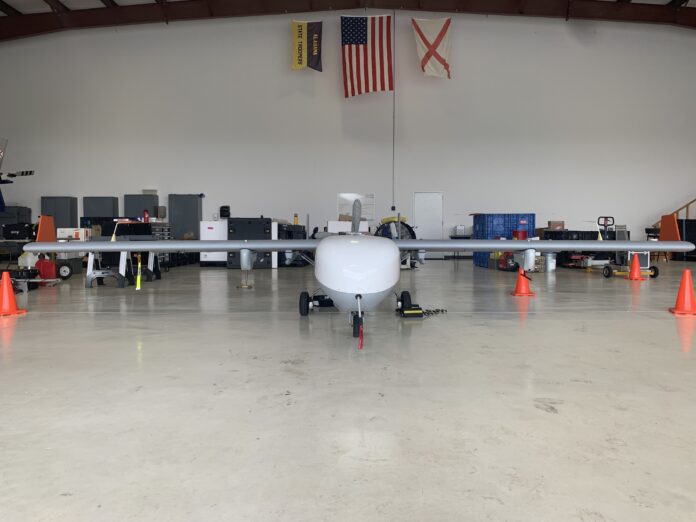
VINEMONT, Alabama – Cullman Regional Airport works closely with the U.S. Department of Energy’s Atmospheric Radiation Measurement User Facility (ARM) and hosts government-owned, contractor-operated unmanned aerial systems (UAS) – or drones – to collect atmospheric data to assist the Department of Energy in producing weather forecasts and projections, storm patterns, and air quality information.
“It’s basically a smaller version of the Predator that the military currently uses,” said Ben Harrison, director of Cullman Regional Airport. “The cool thing for us is that we’re at the forefront of this technology. The government has chosen to partner with us.”
The flights took place from July 24 to August 7, 2024, while the user facility was building an atmospheric observatory in Bankhead National Forest. During the two-week flight schedule, ARM’s ArcticShark UAS collected meteorological measurements and recorded cloud, aerosol and atmospheric processes at the atmospheric science observatory, storing data on humidity, temperature, cloud composition, trace gases, airborne particles such as dust and even land surface properties.
Sampling is done through the nose of the ArcticShark, a fact that is an anomaly in the scientific and atmospheric research community, since most of the 21 atmospheric tools and instruments housed in the nose of the ArcticShark are, in their normal form, usually the size of the ArcticShark itself.
Unmanned aircraft are used for these data collection missions because of their precision. Precise and repeatable courses executed using the UAS autopilot system ensure that no data is corrupted by user error. Pilots are located on the ground, up to 100 nautical miles from the aircraft, and send signals when the UAS has completed data collection.
Pete Carroll, UAS operations manager, said: “We fly over the same area repeatedly at different times of the year and day to collect the different samples.”
The entire project is funded by the Department of Energy, so the collection and data results are free and publicly available, allowing students, scientists and local researchers to access the same data for research or academic purposes as the country’s leading scientists, free of charge.
“It’s government property and it’s called a government-owned, contractor-operated program. It’s free for everyone, so if you want to use it to write a paper and use any data from the last 30 years or so, you can find anything, anything,” Carroll said.
Copyright 2024 Humble Roots, LLC. All rights reserved.

